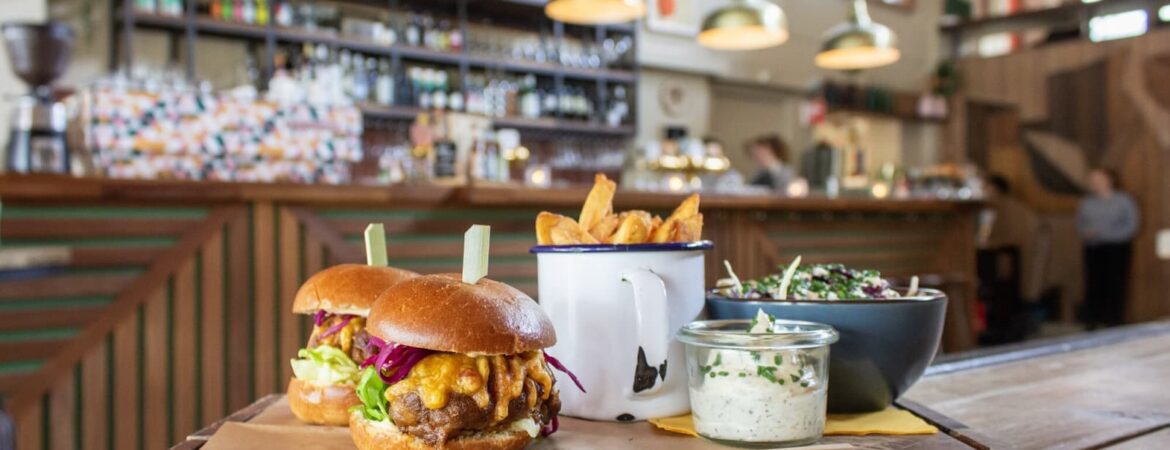Pop-up restaurants have emerged as a dynamic trend within the food industry, captivating chefs, owners, managers, and customers alike. The allure of these temporary culinary experiences lies in their ability to offer creative freedom to chefs, testing opportunities for owners and managers, and an exciting array of food concepts for customers. While the concept of starting a pop-up restaurant may seem daunting due to logistical challenges, understanding the key elements can elevate your business and set you on a path to success.
What is a Pop-Up Restaurant?
Definition of a pop-up restaurant
A pop-up restaurant is a temporary dining establishment that allows chefs to showcase their culinary skills in unique settings, ranging from exclusive one-night events to seasonal rooftop tents. This innovative concept provides a platform for experimentation and creativity, enabling chefs to engage with diners in unconventional ways.
Characteristics of pop-up restaurants
Pop-up restaurants are characterized by their ephemeral nature, offering limited-time menus and experiences that create a sense of urgency and exclusivity among patrons. These dining ventures often leverage unconventional locations and themes to attract a diverse audience seeking novel gastronomic adventures.

4 Elements That Make for a Successful Pop-Up Restaurant
The concept
The foundation of a successful pop-up restaurant lies in its concept, which should be innovative, cohesive, and tailored to resonate with the target audience. Whether focusing on a specific dish or culinary theme, the concept sets the tone for the entire dining experience, shaping menu offerings, decor, and marketing strategies.
Key considerations when developing a concept:
- Uniqueness: Ensure that your concept stands out in a crowded culinary landscape, offering a fresh perspective or a unique twist on familiar flavors;
- Market research: Conduct thorough market research to identify current trends, consumer preferences, and potential gaps in the market that your concept can fill;
- Brand identity: Define a strong brand identity that aligns with your concept, encompassing visual elements, storytelling, and messaging that resonate with your target demographic.
| Concept Development Checklist |
|---|
| – Conduct market research |
| – Define brand identity |
| – Create unique menu offerings |
The location
Selecting the right location is crucial for the success of a pop-up restaurant, as it influences foot traffic, visibility, and ambiance. Whether opting for a traditional storefront, a mobile food truck, or a temporary outdoor venue, the location should complement the concept and cater to the preferences of your target audience.
Factors to consider when choosing a location:
- Accessibility: Ensure that the location is easily accessible to your target demographic, whether through public transportation, parking facilities, or pedestrian-friendly routes;
- Atmosphere: Evaluate the ambiance and surroundings of the location to determine if it aligns with the desired dining experience, whether casual, upscale, or thematic;
- Permits and regulations: Familiarize yourself with local zoning laws, health regulations, and licensing requirements to ensure compliance and smooth operations.
| Location Selection Criteria |
|---|
| – Accessibility |
| – Atmosphere |
| – Compliance with regulations |
The kitchen equipment and technology
Efficient kitchen equipment and technology play a vital role in the seamless operation of a pop-up restaurant, enhancing productivity, consistency, and food quality. From cooking appliances to point-of-sale systems, investing in the right tools can streamline processes and elevate the overall dining experience for guests.
Essential kitchen equipment and technology:
- Versatile cooking appliances: Equip your kitchen with versatile tools such as grills, ovens, and fryers that can accommodate diverse menu items and cooking techniques;
- Inventory management software: Implement inventory tracking software to monitor stock levels, track ingredient usage, and optimize purchasing decisions;
- Mobile payment solutions: Offer convenient payment options for customers, including mobile payment apps and contactless payment terminals to enhance transaction efficiency.
| Kitchen Equipment Checklist |
|---|
| – Versatile cooking appliances |
| – Inventory management software |
| – Mobile payment solutions |
The promotional strategy
Developing a comprehensive promotional strategy is essential for attracting diners, generating buzz, and maximizing the impact of your pop-up restaurant. By leveraging a mix of online and offline marketing tactics, you can effectively reach your target audience, build anticipation, and drive engagement leading up to the event.
Components of an effective promotional strategy:
- Social media campaigns: Utilize social platforms to create engaging content, share behind-the-scenes glimpses, and interact with followers to build excitement and awareness;
- Collaborations and partnerships: Forge strategic partnerships with influencers, local businesses, or food bloggers to extend your reach and tap into existing communities;
- Email marketing: Build an email list of interested diners and send targeted campaigns with event details, special offers, and exclusive promotions to drive ticket sales and reservations.
| Promotional Strategy Elements |
|---|
| – Social media campaigns |
| – Collaborations and partnerships |
| – Email marketing |

What are the Benefits of a Pop-Up?
You can test a location.
Pop-up restaurants provide an opportunity to test different locations and gauge customer response without committing to a long-term lease. By exploring diverse neighborhoods, markets, or event venues, you can gather valuable insights into consumer preferences, foot traffic patterns, and demand dynamics to inform future business decisions.
You can generate hype.
The temporary and exclusive nature of pop-up restaurants naturally generates excitement and curiosity among diners, creating a sense of urgency and desirability around the dining experience. By leveraging scarcity and novelty, you can cultivate a loyal following, drive word-of-mouth marketing, and increase demand for future pop-up events or permanent establishments.
You can use it to sway investors.
Pop-up restaurants serve as compelling showcases for potential investors, demonstrating your culinary prowess, business acumen, and market viability in a tangible and experiential manner. By showcasing innovative concepts, operational efficiency, and customer engagement strategies, you can attract investor interest, secure funding, and pave the way for future growth and expansion.
You can cut restaurant costs.
Compared to traditional brick-and-mortar establishments, pop-up restaurants offer a cost-effective alternative with lower overhead expenses, reduced staffing requirements, and flexible operating models. By leveraging temporary spaces, shared kitchen facilities, and streamlined operations, you can minimize financial risks, optimize resource allocation, and maximize profitability during limited engagement periods.
You can establish yourself in the food industry.
Pop-up restaurants provide emerging chefs, culinary entrepreneurs, and aspiring restaurateurs with a platform to showcase their talents, build a loyal customer base, and establish credibility within the competitive food industry. By delivering exceptional dining experiences, fostering community connections, and garnering positive reviews and press coverage, you can elevate your reputation, expand your network, and open doors to future opportunities.
Conclusion
In conclusion, understanding the intricacies of pop-up restaurants and mastering the key elements that contribute to their success can empower culinary professionals and food enthusiasts to embark on exciting culinary ventures. By embracing innovation, creativity, and strategic planning, individuals can leverage the transient nature of pop-ups to experiment, engage with audiences, and leave a lasting impression on the vibrant landscape of the food industry. Whether aiming to test new concepts, attract investors, or establish a unique culinary identity, pop-up restaurants offer a versatile and dynamic platform for culinary exploration and entrepreneurial growth.
